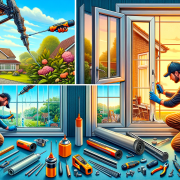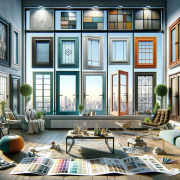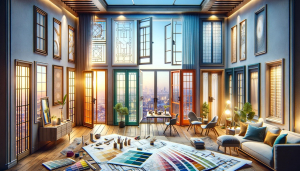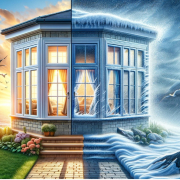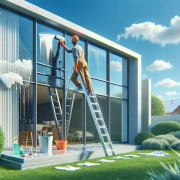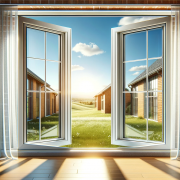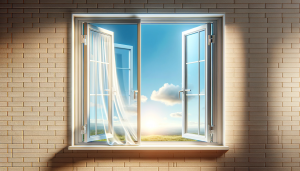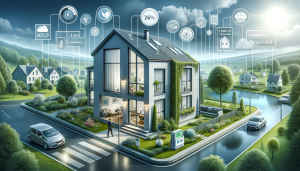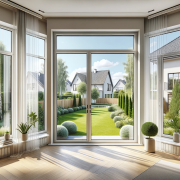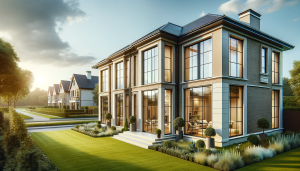UPVC Window Repair Solutions
UPVC windows are a popular choice in homes for their durability, energy efficiency, and low maintenance needs. However, like any component of a home, they can develop problems over time. Understanding how to address common issues can extend the life of your windows and maintain their functionality and appearance. In this first part of our guide, we will delve into the basics of UPVC as a material, common problems you might encounter with UPVC windows, and the tools and materials needed for repairs.

Understanding UPVC and Window Structure
What is UPVC?
UPVC, or unplasticized polyvinyl chloride, is a type of plastic widely used in window frames due to its resilience, weather resistance, and excellent insulation properties. Unlike wood, it doesn’t warp or rot, and unlike metal, it doesn’t rust, making it an ideal material for windows.
Anatomy of a UPVC Window
A UPVC window typically consists of a frame, glass pane, seals, locking mechanism, and sometimes a tilt-and-turn mechanism. Each part plays a crucial role in the window’s overall functionality and contributes to common issues when they arise.
Common Problems with UPVC Windows
Misalignment and Difficulty in Opening and Closing
Misalignment is a frequent issue with UPVC windows, leading to difficulty in opening or closing them properly. This is often caused by the settling of the house or temperature changes affecting the material.
Seal Wear and Condensation Issues
Over time, the seals around UPVC windows can deteriorate, leading to drafts and condensation problems. Maintaining the integrity of these seals is vital for the window’s thermal efficiency.
Problems with Locks and Handles
Locks and handles can become stiff or non-functional due to regular wear or a lack of lubrication. In some cases, these parts may need to be replaced to ensure the window’s security.
Tools and Materials for UPVC Window Repairs
Essential Tools
Screwdrivers are needed for adjusting or replacing handles and locks. Allen keys are used for making minor adjustments to the window mechanism. A plastic scraper is helpful for removing old sealant or debris.
Specialised Tools
Glass suction cups are useful if the glass pane needs to be removed or adjusted. Tensioning tools are required for adjusting the window’s balance.
Replacement Parts and Materials
New locks and handles to replace broken or worn-out parts. Sealant and weather stripping for replacing old or damaged seals.
Step-by-Step Repair Techniques
Adjusting Misaligned Windows
Misalignment can lead to difficulties in operation. Start by identifying which part of the window is misaligned. Check if it’s not closing properly or if there’s a gap. Using an Allen key, adjust the hinges, which can often realign the window with the frame. After adjustments, open and close the window several times to ensure the alignment is correct.
Replacing Worn Seals
Worn seals can cause drafts and condensation. Carefully remove the old seal from the groove in the frame. Measure and cut the new seal to the required length. Fit the new seal into the groove, ensuring it’s snug and secure, to restore the window’s insulation properties.
Fixing Locks and Handles
Over time, window locks and handles may require repair or replacement. Start by removing the old handle or lock. Fit the replacement, ensuring it’s aligned correctly, and screw it into place. Test the new handle or lock to confirm it operates smoothly.
Advanced Repair Techniques for UPVC Windows
When basic maintenance and simple repairs aren’t enough, some UPVC window issues require more advanced techniques. Delving into these methods can help you tackle the more complex problems that may arise with your windows. Repairing Tilt and Turn Windows Tilt and turn windows are popular due to their versatility, but they come with unique challenges. Mechanism Adjustment: These windows have complex mechanisms that can get misaligned. Adjusting them usually involves tweaking the gears or hinges, which requires a careful approach and sometimes specialised tools. Replacing broken parts, like the gearing system, might need replacement if damaged. This is a delicate process as it involves dismantling parts of the window and handling intricate components.
Fixing Double Glazed Units
Double-glazed units can fail, leading to condensation between the panes or draughty windows. Removing the Unit: Carefully remove the beading and gasket from around the unit. This requires precision to avoid damaging the frame. Replacing the glass: Measure the size of the glass accurately before ordering a replacement. Install the new glass and ensure it’s sealed correctly to restore its insulating properties.
Addressing Frame Warping or Damage
UPVC frames can warp or become damaged over time, affecting the window’s functionality. Assessing the Damage: Check the extent of the warping or damage. Minor warping can sometimes be rectified, but severe cases might require part or full frame replacement. Heat Treatment: In some cases, applying controlled heat can help realign slightly warped frames. However, this is a risky procedure and not commonly recommended. Frame Replacement: Replacing a section of the frame or the entire frame is a complex process that usually needs professional intervention.
Sealed Unit Replacement
Replacing the entire sealed unit is sometimes necessary, especially in cases of seal failure or internal condensation. Measurement and ordering: Accurately measure the sealed unit. When ordering, specify the exact size, type of glass, and any special features like low-E coating. Installation: Installing a new sealed unit requires removing the old one, cleaning the frame, and then carefully placing the new unit in the frame. It’s crucial to ensure that it’s perfectly level and sealed to maintain its efficiency.
Upgrading to Energy-Efficient Glass
For enhanced energy efficiency, upgrading the glass in your UPVC windows can be a worthwhile investment. Selecting the Right Glass: Choose double- or triple-glazed units with coatings that improve thermal performance. Professional Installation: Given the complexity and need for precision, professional installation is recommended to ensure optimal performance. In conclusion, understanding basic repairs and maintenance for your UPVC windows can be both cost-effective and satisfying. Regular checks and simple fixes can significantly extend the life of your windows. However, for more complex issues, don’t hesitate to seek professional assistance to ensure your windows remain in optimal condition.

